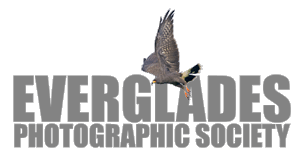
 |
|
|
|
Abisko Auroras There’s something about an aurora. Evanescent, magical. I always loved looking at photos and videos of auroras, but I didn’t start thinking about witnessing them in person until July, 2012. I was on a photo trip in Iceland, in the beautiful city of Akureyri. The denizens mentioned Northern Lights are occasionally visible there in the winter when it’s always dark. Hmmm…really? If I can be here in July, then I can be here in the winter. But they said “occasionally.” So a-googgling I went, seeking a place that offers a relatively higher probability of seeing the Lights. And then I found Abisko. Abisko, Sweden. Population 93. One hundred miles inside the Arctic Circle. The heart of Swedish Lapland. Home of the indigenous, reindeer-herding Sámi people. One of the best places in the world to see the Northern Lights.
It’s not that easy to get to Abisko from south Florida. I arrived after two days of flights from Fort Lauderdale to Newark to Copenhagen to Kiruna, and finally a bus ride even further north to Abisko. I was extremely fortunate and blessed to see the Lights six nights out of the seven I spent in Abisko. My daily routine settled into three photo outings: first light, which is more like twilight since the sun never rises above the horizon in January, around 8-9 AM, last light around 1:30-2:30 PM, and Aurora seeking from 8 PM until after midnight. The rest of the time was spent putting on and taking off myriad layers of clothes. Auroras vary in intensity. In dim light, a camera’s sensor can see a low-intensity aurora much better than our unaided vision. The lower intensity auroras appear as little more than yellowish clouds to my eyes, yet their bright colors were visible in the photos. The colors and motion in higher intensity auroras, however, are quite visible to us without a camera. That’s when it really gets magical.
How to photograph an aurora? The conditions are formidable. Pitch dark and freezing cold. Nothing to focus on except the stars. Which is kind of cool, now that I think about it. The challenge is this – you want a long enough shutter speed to catch sufficient light for a decent exposure, and a short enough shutter speed to capture the details of the aurora’s structure without having it turn into a blob. Most of the time, almost nothing is visible through the viewfinder except the darkness, so the only way to compose is to take a shot, look at it on the display, and make adjustments accordingly. My excellent guide, Chad Blakely, suggested that I start with settings of F2.8, 30 seconds, ISO 1600. These settings worked well with the lower and medium-intensity auroras. When the Lights grew brighter, I was able to lower the ISO, widen the aperture, and increase the shutter speed. Note to camera companies – would it kill you to move the ISO adjustment from a button to a dial? Frozen fingers can spin a dial, but they cannot push a button without eliciting a string of curses from the photographer.
My first aurora experience was a complete joy. Everything I hoped for and more. And yet, back at home, I see so much to improve in my photos. Stronger foregrounds, more leading lines and power shapes, better exposures to reduce noise, the list goes on. But who cares? I had a blast, thrill of a lifetime, and my desire to improve will only keep me coming back for more. I hope you enjoy my images as much as I enjoyed taking them. Thanks. |
|
||
|
|
|||
|
|